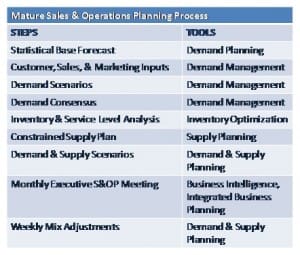Rich Sherman has written a book titled “Supply Chain Transformation,” which will be released in October. It is one of the better supply chain books I’ve read, and certainly the most entertaining.
Rich is a well known figure in our industry who came to supply chain management with a background in marketing. At one point in the book, he says that the output from the marketing folks “manifests itself in most of the variability that impacts Demand Fulfillment. It is often the hand that wields the bullwhip that is mercilessly inflicting pain on operations. The reason collaboration is necessary is that the perspectives and tools employed by [marketing]…will significantly improve your forecast accuracy.”
A perfect example of that surrounds the use of social media by the supply chain organization. As we highlighted in a recent posting, business executives are doubtful about the value associated with social media. Supply chain executives are no different. Think about a consumer trying a new product and tweeting, “This product is terrible.” Not surprisingly, supply chain professionals don’t see that as useful information.
But there is something called “sentiment analysis.” This is a methodology for classifying the polarity of a given text as “positive,” “negative,” or “neutral” — or, if more advanced, classifying the writer’s emotional states such as “angry,” “sad,” or “happy.” Basically, sentiment analysis turns unstructured data into discrete numerical factors that can be plugged into a mathematical formula.
In a recent briefing and discussion with Oracle’s Consumer Goods product team, I asked if it might be possible to use sentiment analysis to improve demand forecasts, particularly the ramp associated with new product launches. They told me that sentiment analysis is being turned into causal factors for the purposes of predicting lift for a particular type of marketing campaign. For example, sentiment analysis could be used for predicting whether a YouTube campaign or a more traditional promotion would generate better ROI.
The Oracle team also told me that while they don’t know of any of their customers actively using sentiment analysis to improve demand forecasts, they too see the potential to do that. Their existing demand forecasting tool (Demantra) has the ability to turn a variety of nontraditional forecast data sources into causal lift factors. For example, Demantra could use weather, the unemployment rate, housing starts as causal factors to improve a forecast. Sentiment analysis would be just another example of this capability.
As Rich points out in his book, collaborating with marketing is not a cure-all. “The forecast will still be wrong; but, not as wrong. And it won’t be wrong for as long.”
(Note: Oracle is an ARC client)

















